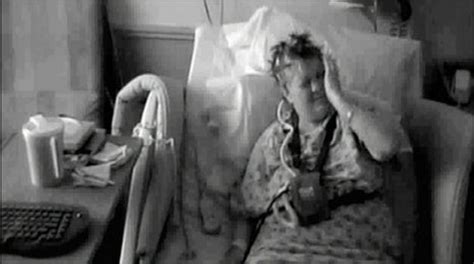Imagine sitting in the comfort of your living room, watching TV, when suddenly one of your hands seems to have a mind of its own. This was the terrifying reality for a 77-year-old woman who found herself helpless as her left hand began moving independently, exhibiting symptoms of what doctors call “alien hand syndrome.”
According to a peculiar case study published in the journal Baylor University Medical Center Proceedings, the elderly woman experienced her left hand stroking her face and hair without her conscious control. The authors described how she felt sheer terror as her attempts to restrain the rogue hand with her right hand proved futile. For nearly half an hour, she endured this surreal ordeal as her alien hand continued making purposeful movements beyond her command.
“Her left hand stroked her face and hair without her will. She got terrified.”
Alien hand syndrome, also known as Dr. Strangelove syndrome, is a fascinating yet perplexing condition where an individual loses autonomy over one of their hands, which then acts autonomously. From grabbing objects to potentially endangering the person by restricting airflow, the alien hand can lead to distressing situations that disrupt daily life.
“Alien hand syndrome is an interesting situation in which a person loses control of his or her hand.”
Typically arising from brain injuries, strokes, or neurodegenerative disorders like Alzheimer’s disease, this enigmatic phenomenon offers unique challenges due to its unpredictable nature and lack of definitive treatment options. While there is no cure for alien hand syndrome, experts recommend behavioral therapies such as engaging the unruly limb in activities to help manage its wayward behavior.
In the case of the elderly lady mentioned earlier, her bout with alien hand syndrome lasted only 30 minutes – a remarkably brief episode compared to other documented instances that can persist for days or even years. However, despite the fleeting nature of her experience with this unsettling condition, she faced lingering weakness and numbness in her left arm following the incident.
“Her attempts to control… were unsuccessful… almost 30 minutes…”
Accompanied by concerns about dragging her left leg while walking post-episode, she sought medical attention promptly with assistance from her husband. Doctors speculated that a stroke might have triggered her alien hand episode after she temporarily halted blood clot medication before undergoing spinal surgery. Over several hours at the hospital, she gradually regained coordination on her left side before being discharged home.
The roots of alien hand syndrome trace back over a century ago when German neurologist Kurt Goldstein documented its earliest known case in 1908. Occasionally referred to as Dr. Strangelove syndrome in homage to the iconic character from Stanley Kubrick’s film depicting uncontrollable behavior, this rare neurological quirk continues to fascinate medical professionals and researchers alike.
Beyond clinical observations lie poignant accounts like that of a woman who struggled with buttoning clothes using one hand while inadvertently undoing them with the other – demonstrating how profoundly disruptive alien hand syndrome can be on everyday tasks and personal routines.
As we delve into these extraordinary narratives surrounding alien hand syndrome…
[Continue expanding on expert insights and real-life experiences related to alien-hand-syndrome.]




Leave feedback about this